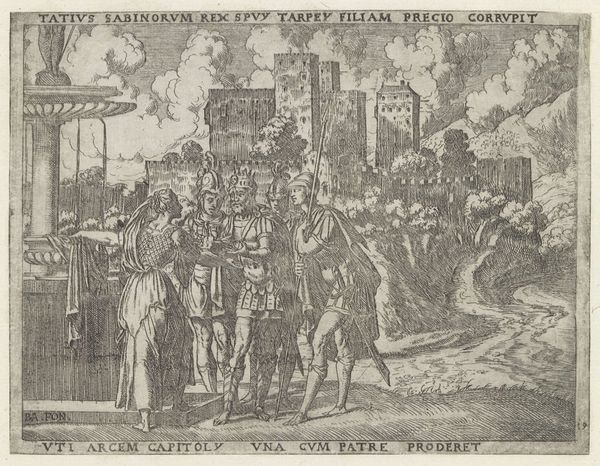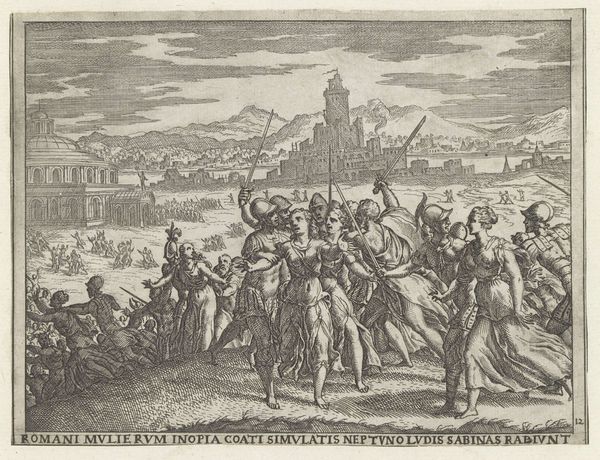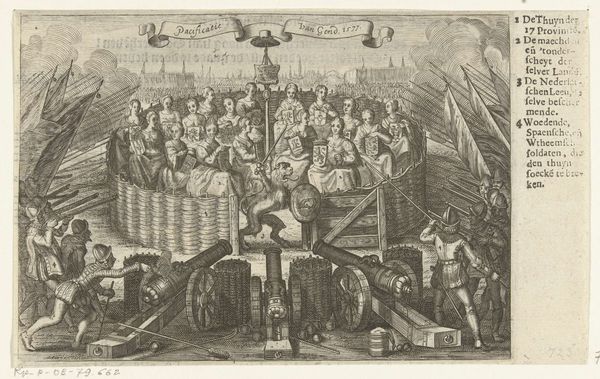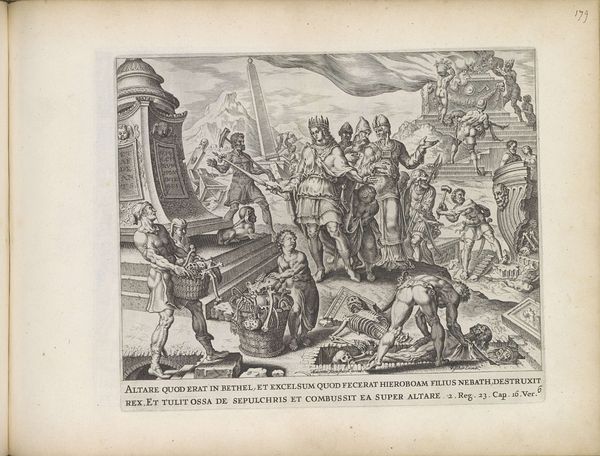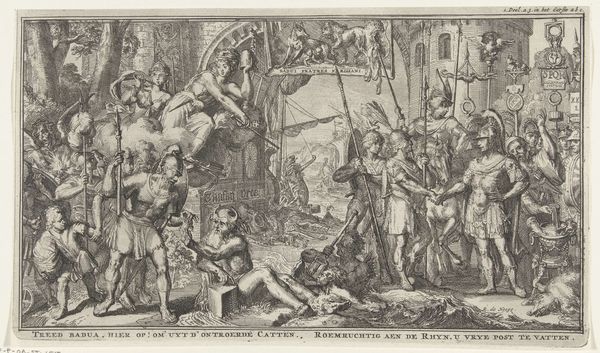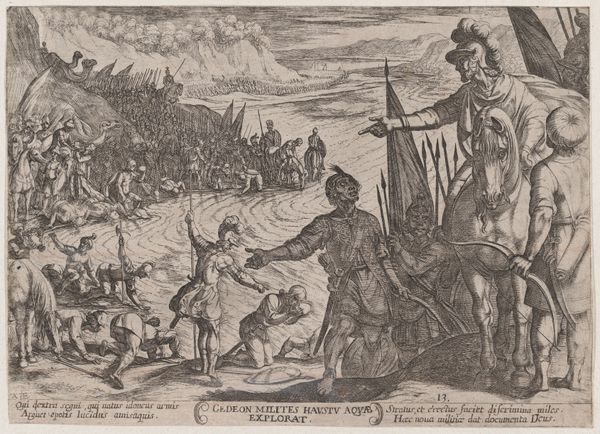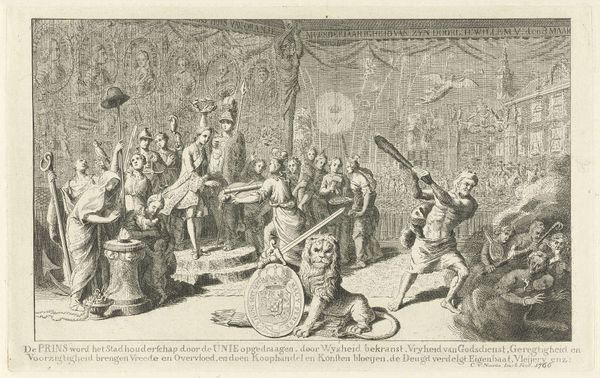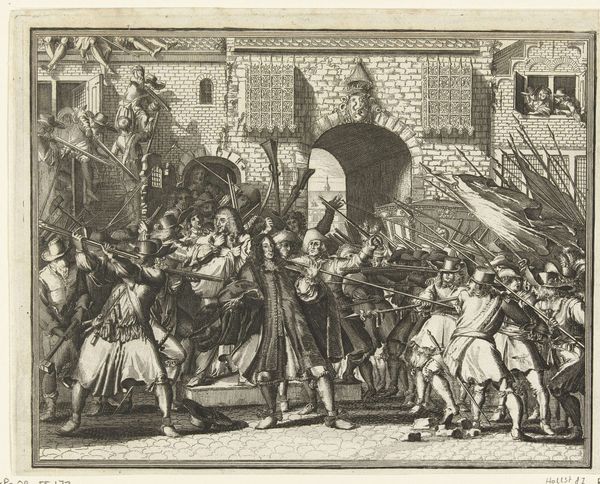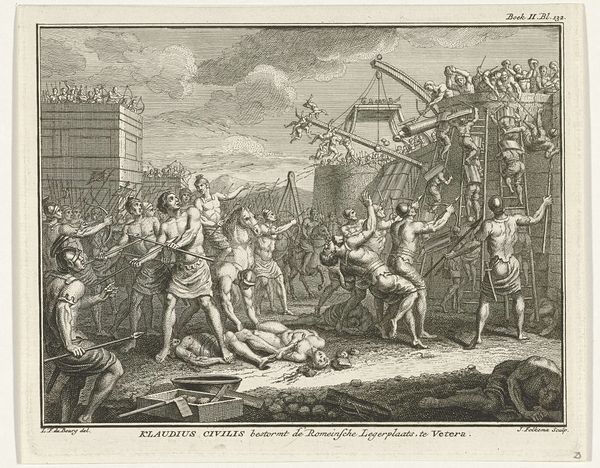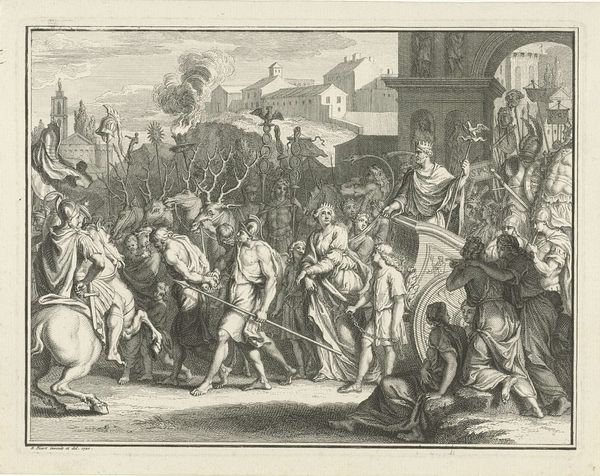
print, engraving
#
narrative-art
# print
#
old engraving style
#
figuration
#
history-painting
#
academic-art
#
italian-renaissance
#
engraving
Dimensions: height 135 mm, width 180 mm
Copyright: Rijks Museum: Open Domain
Giovanni Battista Fontana created this print, "Romulus Takes the City of Caenina," in the 16th century using etching and engraving. The intricate lines, achieved through painstaking work with sharp tools and acid, give the scene a sense of depth and drama. Look closely, and you can see the way Fontana used hatching to create shadow and volume, transforming a flat surface into a dynamic battlefield. This wasn't just about artistic skill; it was also about the development of printmaking as a medium. Etchings like this made it possible to reproduce images and ideas, contributing to the spread of knowledge and the growth of a visual culture. The image shows how much work and skilled labor went into production in this period. Fontana's print represents a victory, but also the labor and skill behind its making. It reminds us that art is often born out of craft and design, and that the techniques used in its creation can carry just as much meaning as the subject itself.
Comments
No comments
Be the first to comment and join the conversation on the ultimate creative platform.
